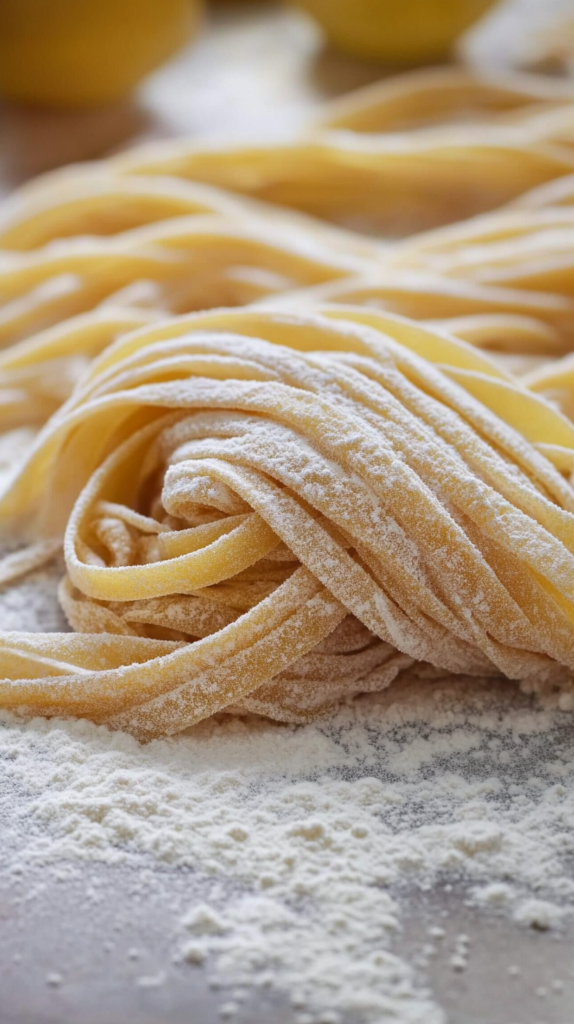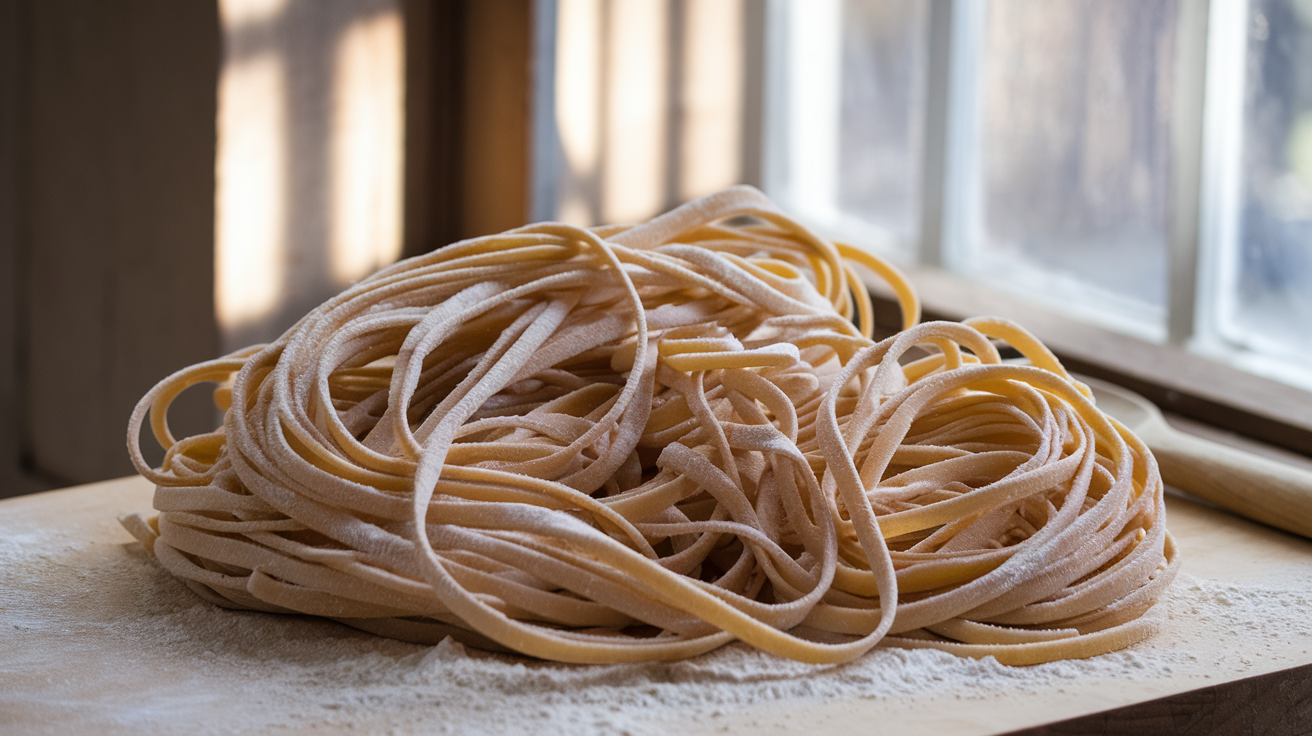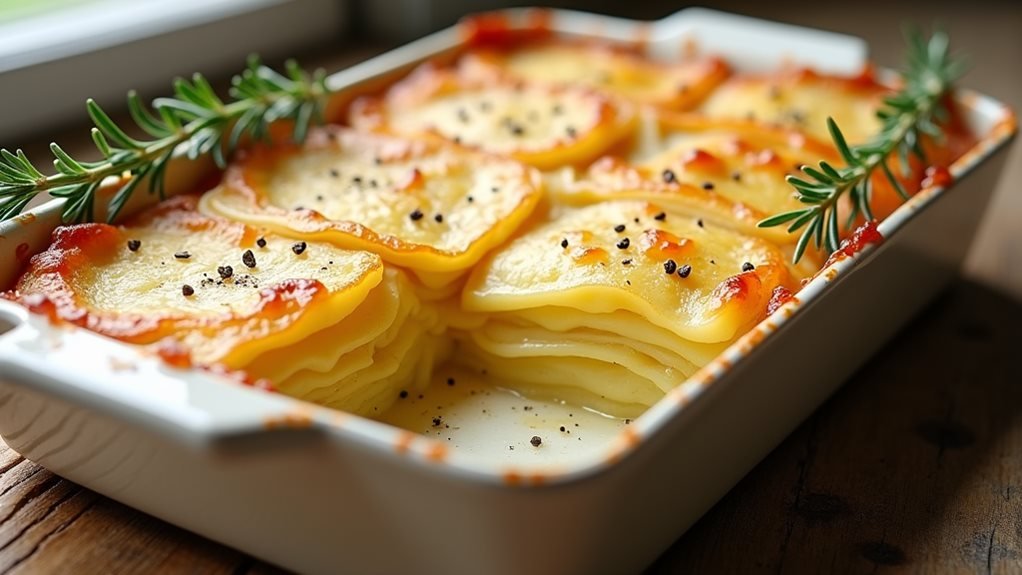To store fresh pasta, dust it lightly with flour and arrange it in loose nests on a parchment-lined baking sheet, letting it dry at room temperature for 30 minutes. For short-term storage, place the pasta in an airtight container and refrigerate for up to two days.
If you plan to freeze your pasta, flash-freeze the dusted nests on a baking sheet for 30 minutes, then transfer them to freezer-safe containers or vacuum-sealed bags for up to three months. Always check for discoloration or off-putting odors before use. Proper storage techniques guarantee that your homemade pasta maintains its perfect texture and authentic flavor.
Storing Fresh Pasta Short-Term
Fresh pasta requires proper storage to maintain its texture and prevent sticking. If you plan to use your homemade pasta within 24 hours, follow these crucial refrigeration tips.
Initially, dust your pasta lightly with flour and arrange it in loose nests on a baking sheet lined with parchment paper. Let the pasta dry at room temperature for about 30 minutes before transferring it to an airtight container.
For ideal shelf life in the refrigerator, store your fresh pasta in a container that allows minimal air exposure. You can keep it refrigerated for up to 2 days, though it’s best to use it within the primary 24 hours.
If you notice any discoloration or off-putting odors, it’s time to discard the pasta.
Freezing Methods for Extra Batches

When you’ve made more pasta than you can use within a few days, freezing is an excellent preservation method that maintains its quality for up to three months.
Dust your fresh pasta with flour to prevent sticking. Arrange the pieces in a single layer on a parchment-lined baking sheet. Use flash freezing: Place the sheet in the freezer for 30 minutes until the pasta becomes firm.
Once frozen, you’ll want to transfer the pasta to freezer-safe containers or bags. For best results, consider vacuum sealing your pasta to prevent freezer burn and extend its shelf life.
If you don’t have a vacuum sealer, remove as much air as possible from the storage bags before sealing. Label each container with the date and type of pasta for easy identification.
Best Storage Containers and Equipment
Proper storage containers can make the difference between well-preserved pasta and a clumpy mess. To protect your fresh pasta from moisture and air exposure, you’ll need airtight containers with secure, snap-on lids.
Look for containers that are specifically designed for pasta storage, with tall sides to accommodate long noodles and compartments to separate different shapes.
For long-term storage, invest in a vacuum sealer system. These machines remove all air from specialized storage bags, preventing freezer burn and considerably extending the shelf life of your pasta.
If you don’t have a vacuum sealer, you can use freezer-grade zip-top bags, but be sure to press out as much air as possible before sealing.
Choose containers with clear sides so you can easily identify contents and track freshness dates.







